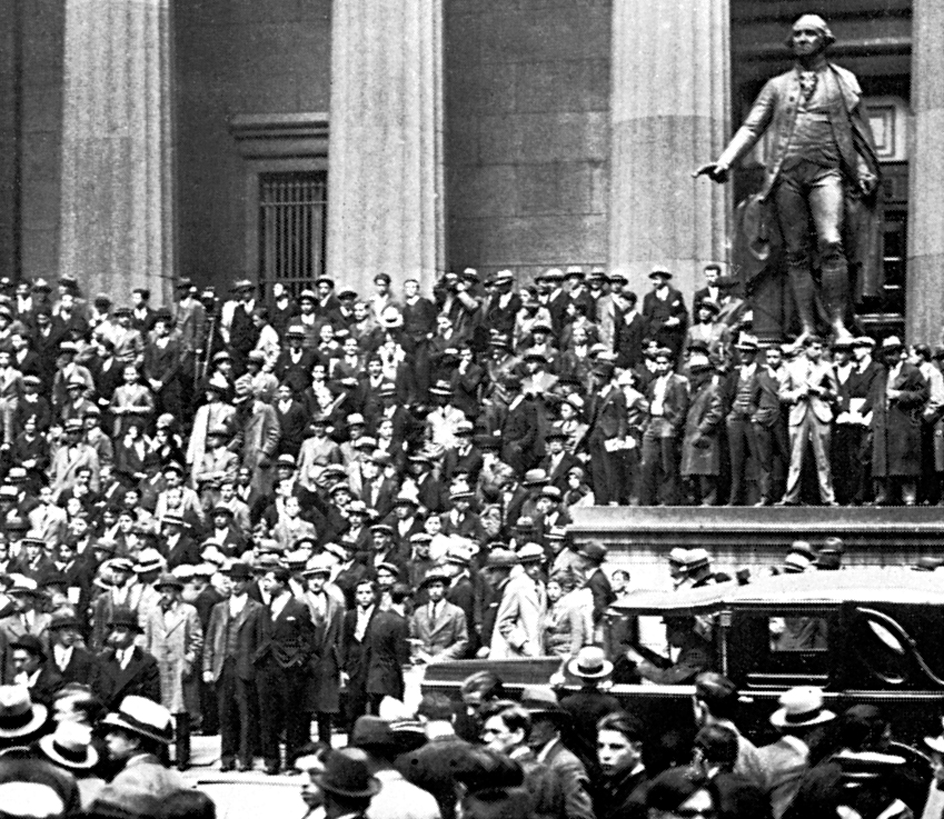Stock market crash of 1929 was the collapse of the United States stock market in October 1929. This abrupt decline in the value of the market was one of the pivotal events contributing to the Great Depression , a worldwide economic slump of the 1930’s.

Background.
During the 1920’s, the United States economy grew rapidly and many Americans became more prosperous. The average price of stocks on the New York Stock Exchange increased about six-fold from 1921 to 1929. Rising share prices encouraged many people to speculate—that is, buy shares in hope of making large profits following future price increases. In 1928 and 1929, the United States government raised interest rates in an effort to slow stock market speculation.
Market crash.
After closing at a record high 381.17 on Sept. 3, 1929, the New York Stock Exchange stood at 305.85 when the stock market closed on October 23. The Dow Jones Industrial Average , which tracks stock prices of 30 major firms, shows the price trends of stocks traded in the United States. The following day, October 24, later known as “Black Thursday,” the stock market average dropped to 299.47. Most share prices remained steady on Friday and Saturday. But the following Monday, October 28, share prices fell again and the stock market lost nearly 13 percent of its total value, falling to 260.64. On Tuesday, Oct. 29, 1929—” Black Tuesday “—shareholders panicked. A massive sell-off of shares caused the stock market to fall almost 12 percent to 230.07. By mid-November, stock prices had dropped about 48 percent from their September high.
Aftermath.
Share prices fluctuated and fell for the next three years. On July 8, 1932, the stock market reached its lowest value during the Great Depression—41.22, an 89 percent drop from its 1929 high. Some stocks fell by 98 percent between 1929 and 1932. Because of falling stock prices, banks and investors lost large sums of money. Also, increased uncertainty about the future of the economy led consumers to cut back on purchases of goods and services. These factors helped make the Great Depression worse. The Dow Jones Industrial Average failed to reach its 1929 high again until 1954.
